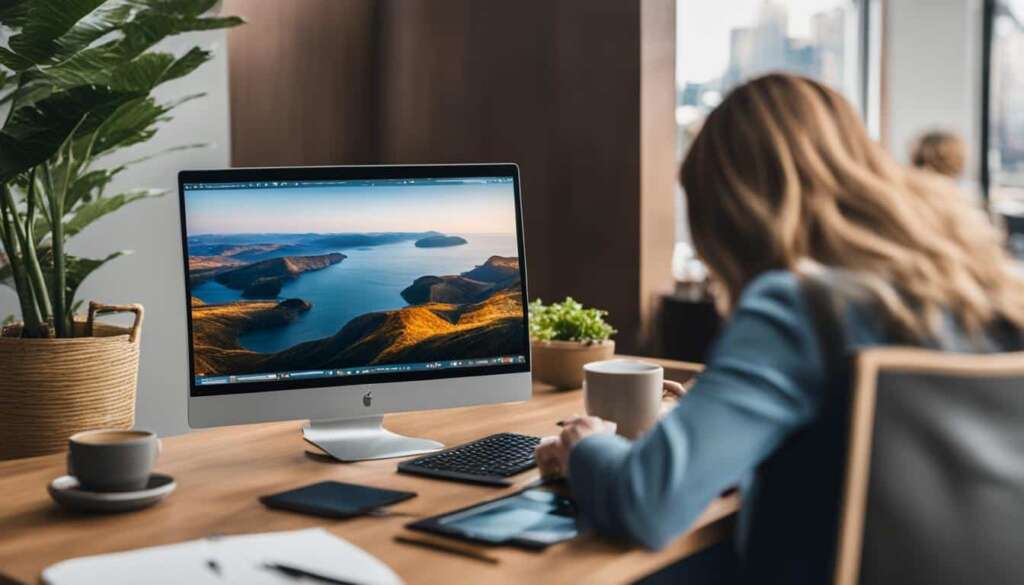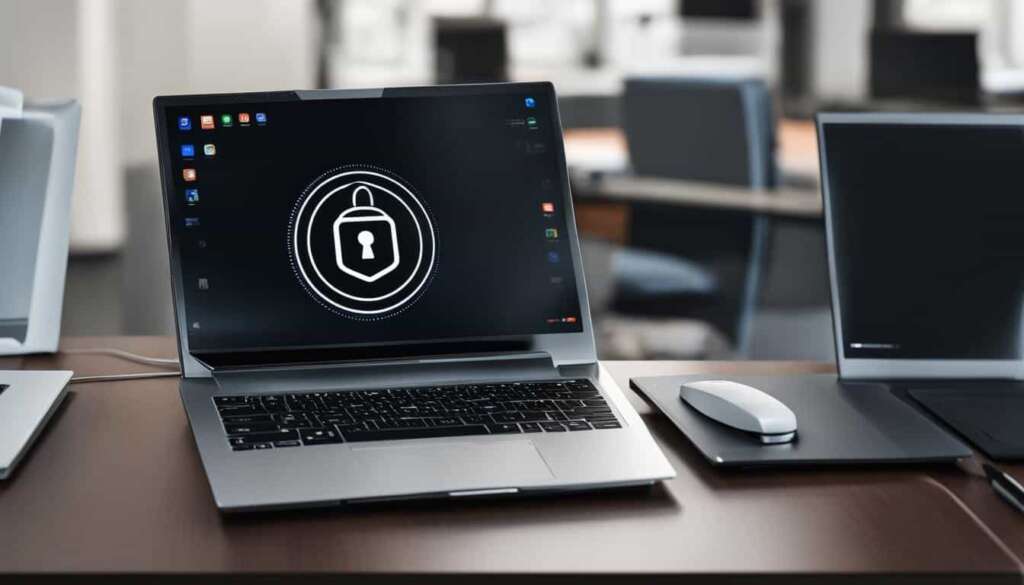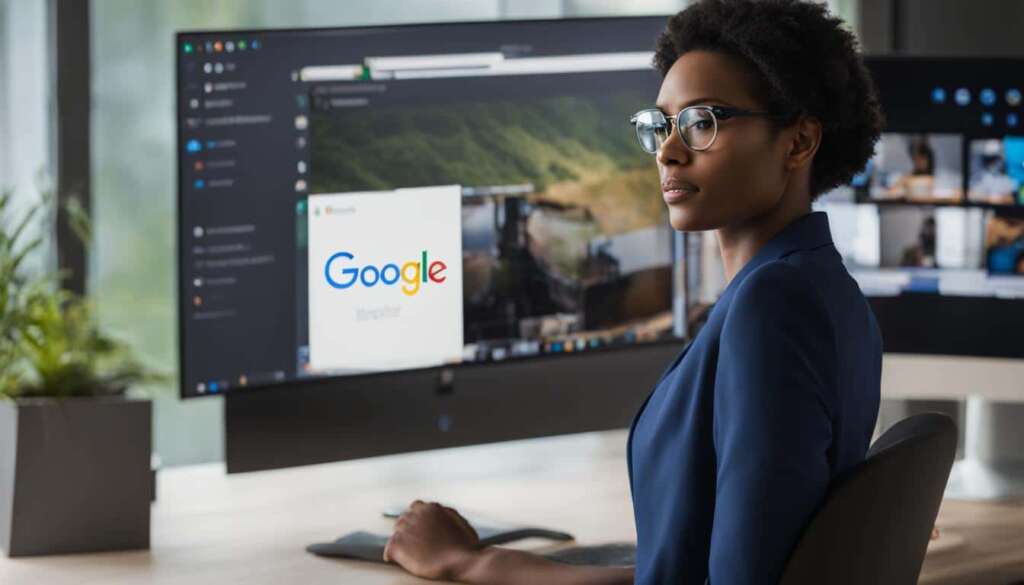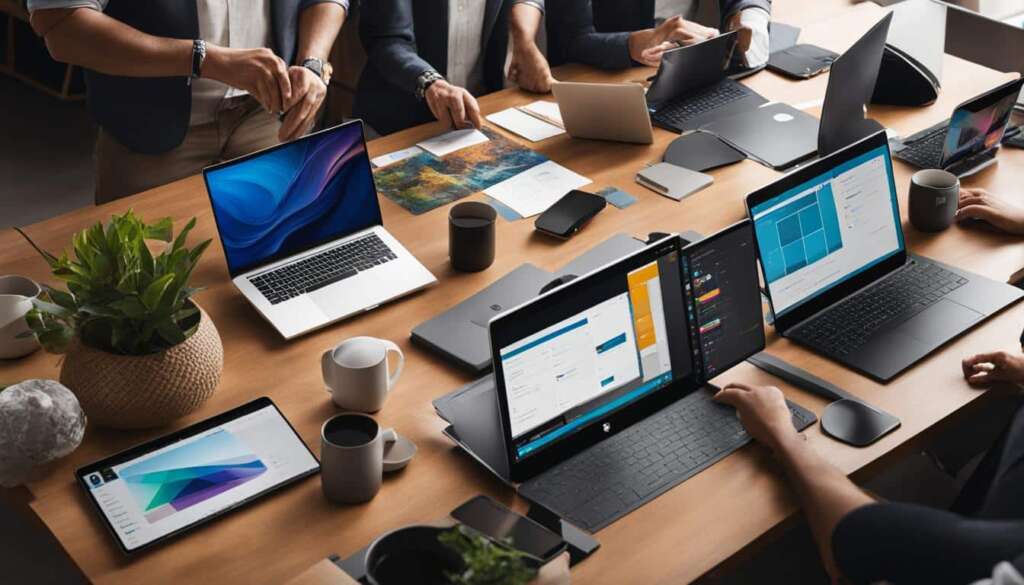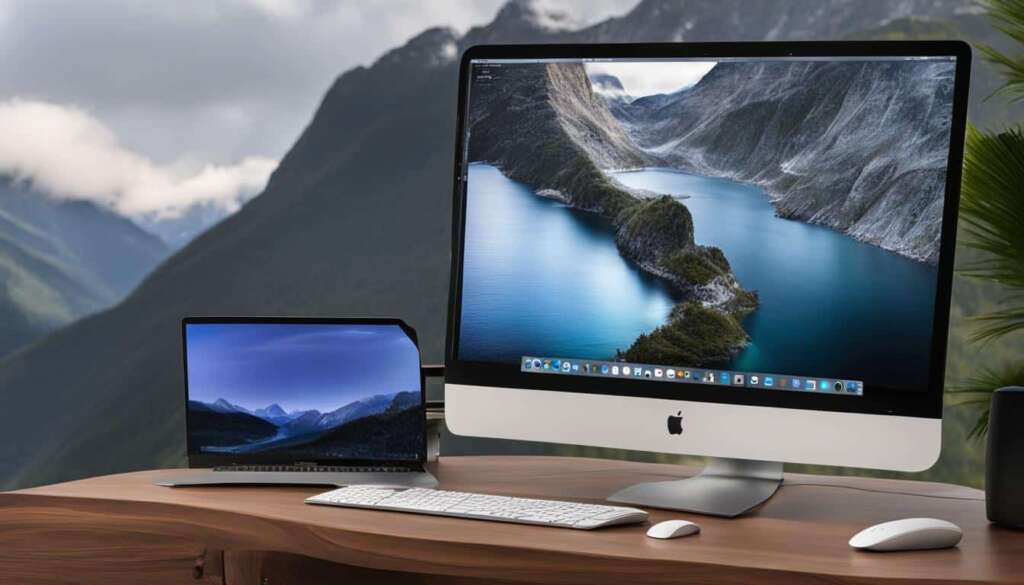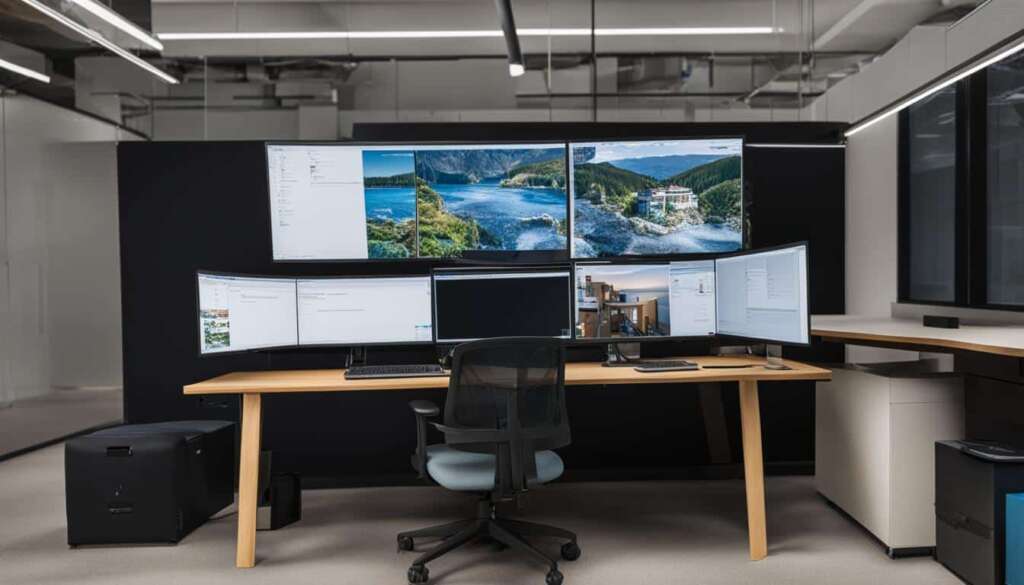Table of Contents
Welcome to the Ultimate Guide to Windows Remote Desktop Access! If you’ve ever wished for a seamless way to connect to your computer from anywhere, then you’ve come to the right place. With Windows Remote Desktop, you can access your desktop right at your fingertips, whether you’re working from home, on the go, or simply need to manage multiple computers efficiently.
Remote Desktop Access has evolved over the years, from the built-in legacy Remote Desktop Connection feature on Windows to powerful external applications like Parallels Remote Application Server (RAS) and Microsoft’s Remote Desktop App. These tools offer enhanced capabilities and improved data security for organizations.
Throughout this guide, we’ll explore the ins and outs of Windows Remote Desktop, from enabling it on your Windows 10 device to unlocking advanced features for a seamless remote working experience. You’ll also discover the benefits and use cases of Windows Remote Desktop, as well as security and performance considerations to ensure a smooth connection.
So, whether you’re a remote worker, an IT administrator, or simply someone in need of accessing their desktop remotely, get ready to unlock the full potential of Windows Remote Desktop. Let’s dive in!
What is Remote Desktop Access and How to Enable it on Windows 10
Remote desktop access is a convenient technology that allows users to connect to their Windows 10 computers from other devices. Whether you’re working from home, on the go, or need to access your files from a different location, remote desktop access provides a seamless solution.
To enable remote desktop access on your Windows 10 device, follow these steps:
- Enable Remote Desktop Connection: Go to the Control Panel, click on System and Security, and select System. From there, click on Remote Settings and check the box that says “Allow remote connections to this computer.
- Find the PC’s IP address and name: To connect to your Windows 10 PC remotely, you’ll need to know its IP address and name. You can find this information in the System Properties window, under the “Computer name, domain, and workgroup settings” section.
- Access your Windows PC from another device: Once you have enabled Remote Desktop Connection and noted down your PC’s IP address and name, you can connect to it from another device using a Remote Desktop software or an external application like Microsoft Remote Desktop App.
These steps ensure a secure and reliable remote connection to your Windows 10 computer, allowing you to access your files and applications with ease.
Benefits and Use Cases of Windows Remote Desktop
Windows Remote Desktop is a versatile tool that provides numerous benefits and offers a wide range of use cases for individuals and organizations. Whether you are a remote worker, an IT administrator, an educator, or a healthcare professional, Windows Remote Desktop can enhance your productivity and streamline your tasks.
Access from Anywhere
One of the key advantages of Windows Remote Desktop is the ability to access your desktop from anywhere. Whether you are on a business trip, working from home, or travelling, you can connect to your desktop computer and have access to all your files, applications, and settings. This feature is particularly valuable for remote work, telecommuting, and professionals who are constantly on the move.
Efficient IT Management
Windows Remote Desktop is a powerful tool for IT administrators and technical support professionals. It allows them to control and manage multiple computers from a single device, eliminating the need for physical presence or on-site visits. With Windows Remote Desktop, IT professionals can troubleshoot issues, install software updates, and perform system maintenance tasks remotely, saving time and resources.
Collaboration and File Sharing
In addition to remote access and IT management, Windows Remote Desktop facilitates collaboration among teams. It enables users to share files and resources seamlessly, enhancing communication and teamwork. Whether you need to collaborate on a project, share documents, or access shared folders, Windows Remote Desktop provides a secure and efficient platform for file sharing.
Diverse Use Cases
Windows Remote Desktop has a wide range of use cases across various industries. Here are a few examples:
- Remote Workers: Windows Remote Desktop enables individuals to work from anywhere, promoting flexibility and work-life balance.
- IT Administrators: IT professionals can efficiently manage and troubleshoot computers across an organization using Windows Remote Desktop.
- Educators: Teachers can remotely access their desktops to create and deliver engaging online lessons.
- Healthcare Professionals: Doctors and medical staff can access patient records and medical software securely through Windows Remote Desktop.
These are just a few examples of the many use cases of Windows Remote Desktop. The versatility and flexibility of this tool make it indispensable for individuals and organizations seeking efficient remote access and management.
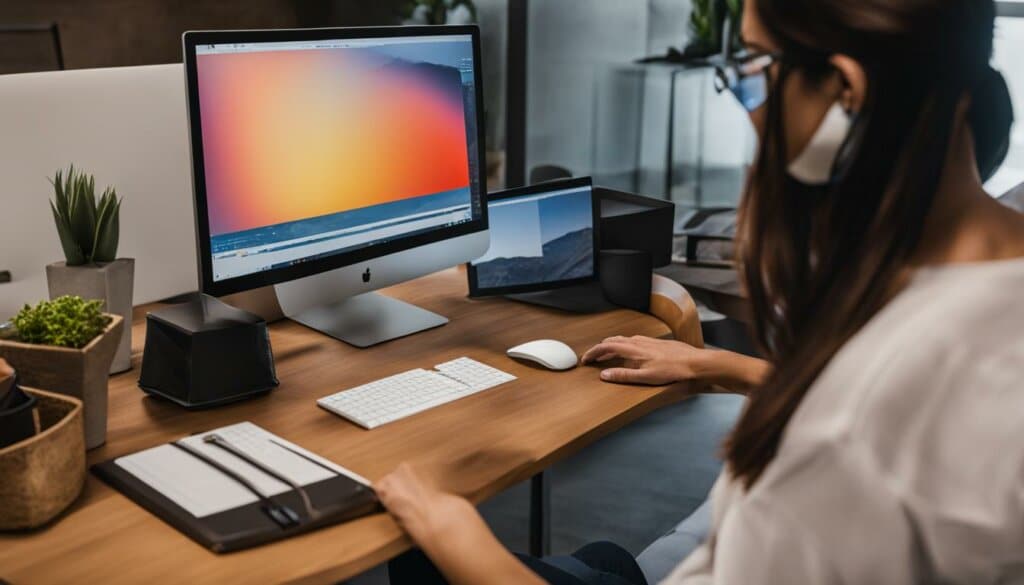
Windows Remote Desktop provides numerous benefits and use cases, whether you need remote access for work, efficient IT management, or seamless collaboration. Its versatility and user-friendly features make it an essential tool for individuals and organizations alike.
Security and Performance Considerations for Windows Remote Desktop
When it comes to Windows Remote Desktop, security and performance are two crucial factors that need careful consideration. To ensure the safety of your data and devices during remote sessions, Windows Remote Desktop incorporates a range of security features such as encryption, authentication, and network isolation.
Encryption plays a vital role in safeguarding your information. It transforms data into a code to prevent unauthorized access, making it difficult for hackers to intercept and decipher your sensitive data. By encrypting the data transmitted between devices, Windows Remote Desktop ensures that your remote sessions are secure and protected from potential threats.
Authentication is another fundamental security measure employed by Windows Remote Desktop. It verifies the identity of users before granting access to the remote computer. This authentication process ensures that only authorized individuals can establish a remote connection, guarding against unauthorized access and potential data breaches.
Network isolation is a powerful security feature that protects your remote sessions from other network traffic. It creates a dedicated and secure channel for your remote connection, preventing any interference or potential threats from other devices on the network. This ensures that your remote desktop activities remain private and secure.
While security is paramount, it’s equally important to consider the performance of your remote desktop sessions. To optimize performance, it is crucial to maintain a strong and stable internet connection. A weak or unstable connection can lead to delays, lags, and potential disruptions during remote sessions. Therefore, always ensure that you have a reliable internet connection for the best remote desktop experience.
In addition to a stable connection, keeping your network adapter and graphics card drivers up to date also contributes to optimal performance. Updating these drivers ensures compatibility and efficiency, allowing your remote desktop sessions to run smoothly and without any performance hiccups.
Another performance-enhancing option is the use of a remote desktop gateway. A remote desktop gateway offloads processing from the server computer, resulting in improved performance for the remote session. By leveraging this gateway, you can enjoy a seamless and uninterrupted remote desktop experience.
To troubleshoot any performance issues that may arise during your remote sessions, there are a few tips and tricks you can try. First, check your network connection to ensure it’s stable and not causing any disruptions. If necessary, restart the Remote Desktop service to resolve any temporary issues that may be affecting performance.
If problems persist, consider using a different remote desktop client. Some clients may offer better performance or additional features that can enhance your remote desktop experience. Exploring alternative options can help pinpoint and resolve performance bottlenecks.
Overall, security and performance are crucial aspects when it comes to utilizing Windows Remote Desktop. By implementing robust security measures and optimizing performance, you can have a secure and seamless remote desktop experience, enhancing productivity and efficiency.
Advanced Features of Windows Remote Desktop
Windows Remote Desktop offers a range of advanced features that take your remote desktop experience to the next level. These features not only enhance user productivity but also provide the flexibility and convenience required for efficient remote work.
Multi-Monitor Support
One of the standout features of Windows Remote Desktop is its multi-monitor support. Users can now extend their desktops across multiple monitors, giving them the ability to work with multiple applications simultaneously. With this feature, you can seamlessly transition between screens and increase your productivity.
Remote Printing to Local Printers
Windows Remote Desktop allows you to conveniently print documents to your local printers while connected to a remote desktop. Whether you need to print important reports, contracts, or any other documents, you can do so directly from the remote desktop to your local printers. No need to transfer files or save them locally before printing.
Remote File Transfer between Computers
With Windows Remote Desktop, transferring files between your local computer and the remote desktop is a breeze. Whether you need to access files stored on your local machine or transfer files from the remote desktop to your computer, you can do so seamlessly. This feature eliminates the need for external storage devices or complex file transfer methods.
Remote Assistance
In addition to the other advanced features, Windows Remote Desktop also offers remote assistance capabilities. This means that you can grant someone else access to remotely control your computer to provide assistance or collaborate on a project. The remote assistance feature is ideal for remote troubleshooting, training sessions, or collaborative work.
These advanced features of Windows Remote Desktop empower users to have a seamless and efficient remote working experience. Whether you need to work across multiple monitors, print documents to local printers, transfer files between computers, or collaborate with others, Windows Remote Desktop has you covered.
In the next section, we will explore the screen, audio, and file transfer settings in Windows Remote Desktop, allowing you to customize your remote desktop experience even further.

Screen, Audio, and File Transfer Settings in Windows Remote Desktop
Windows Remote Desktop provides users with various settings to customize their remote desktop experience. These settings allow users to configure monitor settings, audio settings, and file transfer options.
Monitor Settings
Users can choose how their remote desktop is displayed by adjusting the monitor settings. They have the flexibility to:
- Use all their monitors for a larger viewing area
- Use a single monitor to focus on specific tasks
- Display the remote desktop in a smaller window for multitasking
This feature ensures that users can adapt their remote desktop display to suit their individual preferences and working style.
Audio Settings
Windows Remote Desktop allows users to control the audio settings during their remote session. Users can select:
- Playback on the local computer to listen to audio on their device
- Playback on the remote computer to hear audio from the remote desktop
- No playback to disable audio during the remote session
These options provide users with the flexibility to tailor the audio experience to their needs and environment.
File Transfer Settings
Transferring files between the local computer and the remote desktop is made simple with Windows Remote Desktop. Users can:
- Copy and paste files between devices
- Attach local drives on the remote desktop to access files directly
This seamless file transfer feature enables users to share documents, images, and other files effortlessly, improving productivity and collaboration.
Overall, these settings empower users to customize their remote desktop experience, ensuring a seamless integration between devices and enhancing productivity in any remote work environment.
Conclusion
Windows Remote Desktop is a powerful tool that provides users with the flexibility and convenience of accessing their desktops from anywhere. Whether you’re a remote worker, IT professional, or someone who needs to collaborate with others, Windows Remote Desktop offers a seamless solution for remote access.
With its secure and reliable connection, users can feel confident in accessing their desktops and managing multiple computers efficiently. The various features and settings available allow for customization and improved user experience. By following the steps outlined in this guide and considering the recommended practices, users can maximize the potential of Windows Remote Desktop.
Whether you need to access your desktop for remote work, provide technical support to others, or quickly share files between devices, Windows Remote Desktop is an essential tool. Its intuitive interface and robust capabilities make it a reliable choice for anyone in need of remote access.
FAQ
What is Remote Desktop Access?
Remote Desktop Access allows users to connect to their Windows computers from another device, enabling them to access their desktops and files remotely.
How can I enable Remote Desktop Access on Windows 10?
To enable Remote Desktop Access on Windows 10, you need to enable Remote Desktop Connection on the Windows device you want to connect to, note down the PC’s IP address and name, and access the Windows PC from another device using Remote Desktop or an external application like Microsoft Remote Desktop App.
What are the benefits and use cases of Windows Remote Desktop?
Windows Remote Desktop offers several benefits, including remote working capabilities for individuals, control and management of multiple computers for IT administrators, and collaboration through file and resource sharing. It is used by remote workers, IT administrators, educators, healthcare professionals, and anyone in need of accessing their desktop from another computer.
How does Windows Remote Desktop ensure security and performance?
Windows Remote Desktop incorporates various security features like encryption, authentication, and network isolation to protect data and devices. It is important to maintain a strong internet connection and update network adapter and graphics card drivers for optimal performance. Using a remote desktop gateway can also help improve performance.
What are the advanced features offered by Windows Remote Desktop?
Windows Remote Desktop offers advanced features like multi-monitor support, remote printing, remote file transfer, and remote assistance. These features enhance the user experience and provide greater flexibility and productivity.
How can I customize screen, audio, and file transfer settings in Windows Remote Desktop?
Users can configure monitor settings, audio settings, and file transfer settings in Windows Remote Desktop. They can choose to use all their monitors or a single monitor, adjust audio settings, and transfer files seamlessly between the local computer and the remote desktop.
Is Windows Remote Desktop an essential tool for remote access?
Yes, Windows Remote Desktop is a powerful tool that allows users to access their desktops from anywhere, collaborate with others, and efficiently manage multiple computers. It offers a secure and reliable connection with various features and settings to enhance the user experience.

